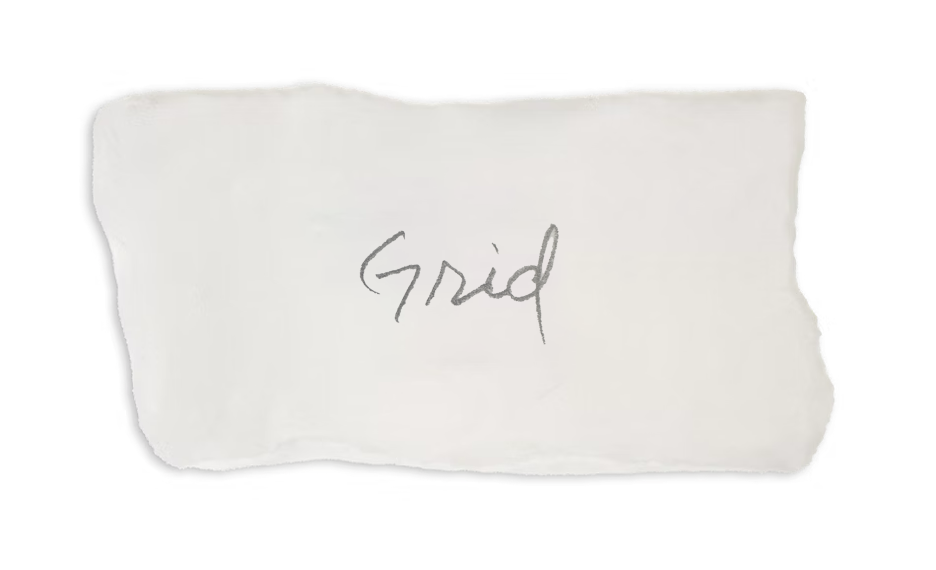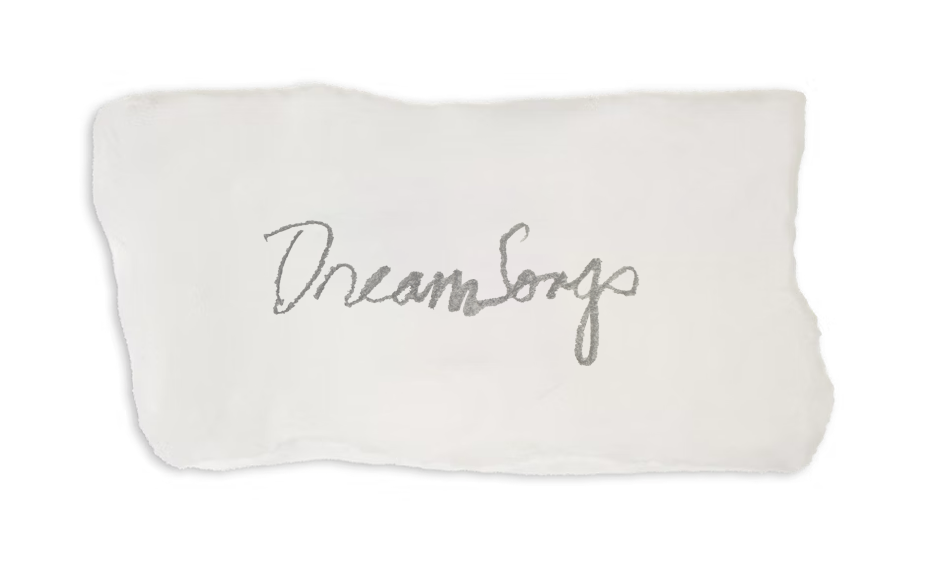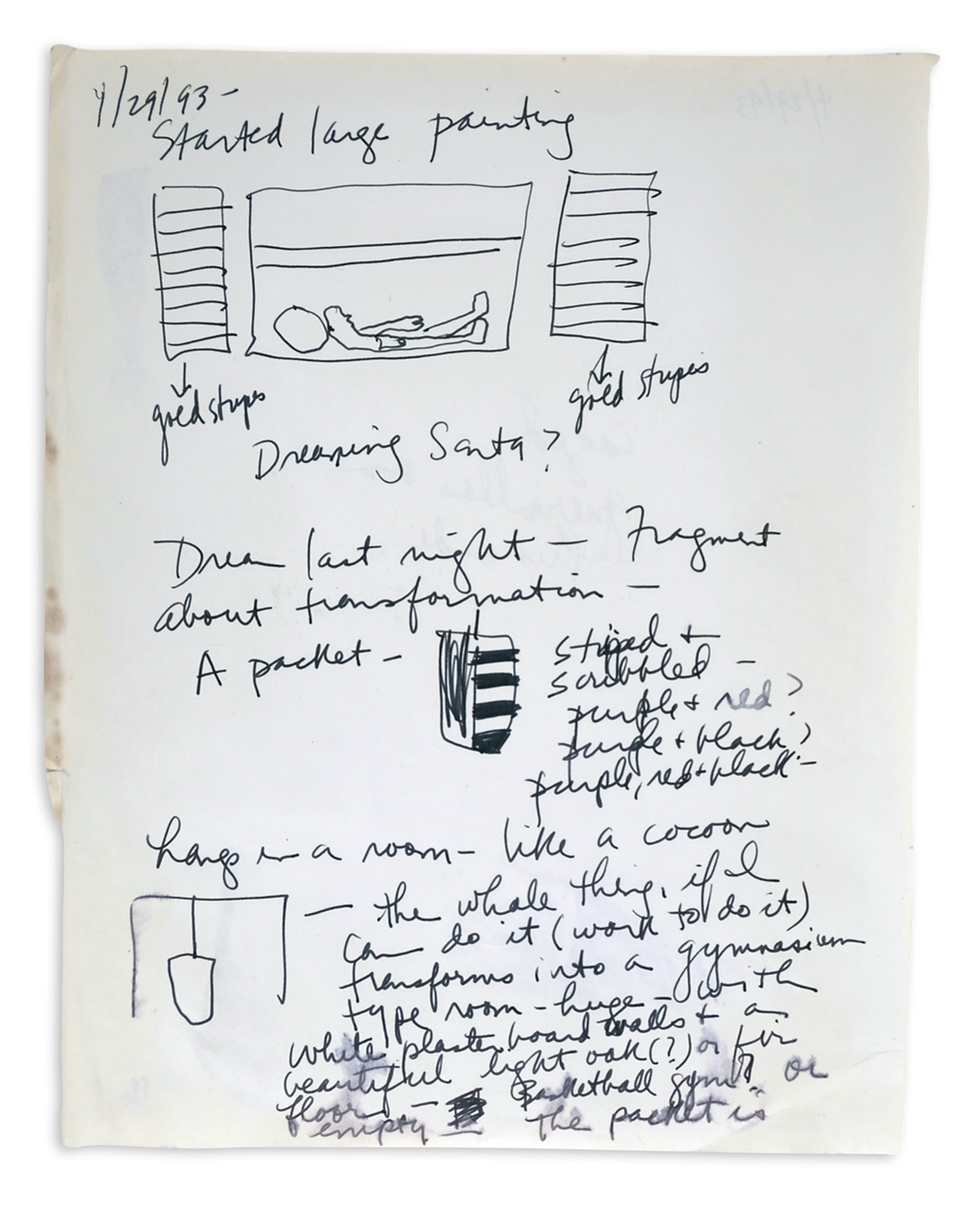Journey

1943
My art began when I was two years old: I lay sick with scarlet fever in a darkened room in Los Angeles’ General Hospital. My skin peeled. Light hurt my eyes. In that cocoon, I floated in a deep, dark, watery space. Forms arose and disappeared. I knew no names for them.

Swim in the fever, the scarlet of the fever. Sink in dark water. Suck in dark air. The water cradles, coiling, curling, rolling. Shadows shape and dissolve. I hurt molten. No day. No night. No mommy. No daddy. People. Food. Words. No people. Alone. The water

Many years passed before I would again find a pathway to the unconscious
through my silent collaborators
where water meets fire
earth touches sky

1953
My 7th grade art teacher asks us to paint a scene with rain for homework. I lose track of time, staying up late, as I try to capture the knife-like reflections of the red taillights of cars on rain-soaked black asphalt.
The next morning, tired but excited, I show my painting to my teacher who says, You aren’t good at art. I stop doing art.
1956
I put my energy into school government, collaborating and leading. I read novels and attend many foreign films and visit museums with my parents. I experience art as a pathway into the unconscious and a web of connection.
1958
In college, I major in English Literature, concentrating on the Middle Ages, a time of dramatic visual storytelling.
1963
I earn a Master of Arts in Teaching English.
1970
I am 29 years old, running after three little boys, Robert, 5, David, 4, and Aram, 1—my daughter, Stacy, still a few years away. Internally, I feel upheaval from what I suppress from my childhood. Externally, the Vietnam War uproots our nation.
I attend the exhibition, Vincent Van Gogh: Paintings and Drawings, at San Francisco’s De Young Museum. Studying this powerful work, made over a mere eight years, my heart opens. As I stand before Wheat Field with Crows, the floodgates of my heart burst and I sob uncontrollably.


That night, I draw for the first time since seventh grade, using a discarded piece of matte board.
On the back of the matte board, I write:
Nothing is enough when you are too hungry.
The search for proportion.
Jewish hand.
We’ll sing for whom it pleases to be born once again.

These statements become a portal through which I enter my journey as an artist.

The grid is a simple, neutral and harmonious structure that invites a matrix of discovery.
1951
I watch my Grandma Rosie weave small squares that she sews together to make baby outfits.

My Grandmother also makes me a comforter, stitching the layers with a grid of pink knots.
As a child, sleeping, dreaming, under the safety of this comforter, I did not know that its shreds and the fragments of my childhood would call to me as an adult to gather them into a new wholeness, into a woven fabric of my making.

1978
Comforter metamorphoses into the artist’s tool, the child into the woman.
To create illustrations for The Hungry Girls, by Patricia Eakins, I ink a gauze remnant of the comforter. Placing this relic suffused with meaning on paper, I roll it through my etching press. With no preconceptions, I block out sections of the inked paper with white paint until an image appears. Fourteen mono-prints illustrate the short stories.


1972
Living in Edinburgh, I learn to weave tapestry, the most basic and magical form of weaving, relying only on hands, fiber, warp and weft stretched on an upright loom.
The rhythm of weaving, the texture of fiber, the organizing qualities of the grid, the integrity of the form teach me that I perceive the world as an infinitely complex woven structure. All my art, since then, expresses this realization, whether I work with sand, fiber, glass, paint, paper, writing or photography.
Text, textile and texture grow from the Latin root, texere, to weave: I see a woven line as text, a written line as weaving.

The rhythmic order of the grid helps me organize inchoate images that arise from the ocean that is the unconscious.

1984 - 1989
pathways to the unconscious
Camping for a month in the American Southwest in 1984, surrounded by the gentle power of beauty, I walk across and within the earth’s worn and forever renewing body. I experience the land as a reservoir of the unconscious: time and space expand into dream and myth.
Chaco Canyon becomes a portal.

Pueblo Bonito, Chaco Canyon
Photo by Sebastião Salgado
Returning to my Northern California studio, my eyes desert-washed, my mind and heart joined by eloquent silence, I am inspired to express desert light. I begin to paint. Painting calls me to dream.

“Songs of the Earth from Space, no. 1”, 1985, 48” x 60”, acrylic on canvas
In 1985 I begin the Continuing Painting series, each painting intended to exist only as a memory captured as a photograph. Story evolves as one painting flows into the next: exquisite scenes dissolve into disturbing ones, only to reemerge in different forms. The canvas becomes a matrix, a womb that gives birth to a dream life of image, story and song.
In 1985, I paint the White Continuing Painting. In 1986, I paint the Black Continuing Painting and in 1987, the Red Continuing Painting. Under the final monochrome surface of each canvas lie approximately 100 layers of paintings.

"Red Continuing Painting," 1987
Chaco Canyon remains a portal, a place of initiation where internal and external landscapes converge. Chaco, like a dream, mediates between the worlds of matter, spirit, and time. Chaco holds an eternally unfolding cosmology that merges science, mathematics, myth, ritual, dream, and the mundane.
In 1989, I paint the Chaco Series. In it, I seek to develop patience so that anxiety does not drive the brush. I build ten 70” x 42” canvases and paint them simultaneously. After six months of painting, I place the canvases in their original order: I discover the Chaco Series begins with dawn, moves through day to dusk into night and dream, and returns to dawn again.



1955

I am fourteen when white supremacists viciously murder another fourteen-year-old, Emmett Till. I stand beside my desk in Social Studies class at Hollenbeck Junior High in Los Angeles as I present my current events report.

Crying, I share the photograph of Emmett Till’s battered face, wanting my classmates to feel the vicious murder of an innocent boy our age and, with that murder, our innocence.
December, 1993
A Salvation Army Santa stands on the corner of 54th Street and 5th Avenue in New York City. Dressed in a red costume, his middle-aged face masked behind a fake white beard, he leans wearily against a lamppost, ringing his brass bell as shoppers rush past him.

Of African descent, wearing the costume of a Northern European mythical figure, he evokes feelings and images associated with story, myth, history, race, politics, conflict, and love. Picturing bones on the ocean floor that mark the route of slave ships, I remember an 18th century diagram of Africans chained side by side. Merging with that image is a photograph of skeleton-men, victims of the Holocaust.



Over the next year, as I paint the Santa, I find joy, rage, and sorrow woven into a timeless song of praise and longing. A series of twenty representational to abstract paintings range in size from 21” x 17” to 72” x 120”, to form a narrative.
1994
My palette reduces itself to the colors of the Santa… black, red and white (or neutral, the color of sand), for the next 20 years.
The Prisoner’s Song series lies in storage for 24 years. Two separate experiences, one in 2016 in Florence, Italy, the other in 2017 in New York, invite me to create a response to its call.


May, 2016
At the Pazzi Chapel in Florence, five nuns, each wearing a long sleeved, pastel floral patterned dress sing “Kyrie Elison.” Their offering feels like light depicted as rays in Renaissance paintings of the Holy Dove. It shines in my heart, opening it to the beauty (Latin, beare, to make sacred) that is always with us.
March, 2017
Visiting New York City, I think about the Santa as I walk down 8th Avenue.

A middle-aged Homeless Man carries his few belongings in a large black plastic bag over his shoulder. Hearing a baby crying, he approaches an elegant pram. The mother looks as though she fears this man might take the pram.
I look into the man’s eyes, and say, “You really love babies.”
When I return home to Galisteo, I dream about a baby in a Christening gown. I order a pattern from Simplicity. Using the pattern for the undergarment, I create a series entitled Songs of Innocence. It completes the Prisoner’s Song.
He smiles as he stares at the crying baby. His smile widens, exposing his gums and three widely spaced teeth. His face reflects the innocence of a baby as he enunciates each word in his response, “I love their purity.”

